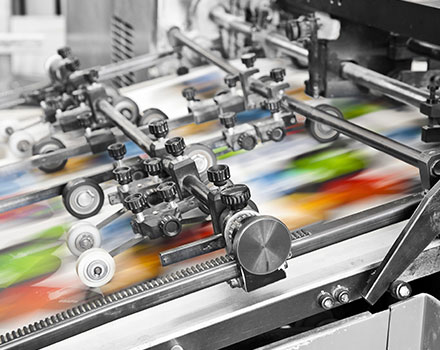In a world where digital and offline exist alongside each other, learn to balance both for optimum customer experience.
Did you know 21% of companies are increasing their offline marketing budgets this year?
When digital dawned, the future of offline marketing channels looked bleak indeed. But time has told a different tale, with very modest reductions in offline spending compared to what was predicted in some quarters.
Since 2011, the proportion of Oracle Marketing Cloud/Econsultancy Marketing Budgets survey respondents planning on decreasing offline marketing budgets has risen by only seven percentage points, which doesn’t represent a big shift in budget priorities.
In fact, the overwhelming trend is to keep offline budgets the same. In 2016, 46% plan to do so, the same as in 2015, and almost level with the rate of 49% back in 2011.
Why are offline budgets staying steady?
You might well ask, given the rise of online, social and mobile, why companies haven’t migrated money over to the new channels with greater speed.
Several factors may be contributing to this, including:
- Marketers are still seeing benefits in traditional methods of advertising
- Established channels have recognised measurement methods, making the case for budget easier at board level
- Decreases in channels such as outdoor, radio and print are countered by increases in other areas e.g. live events, telemarketing
- The cost of TV advertising is falling, making it more attractive for brands
- Digital saturation – consumers can get enough of digital platforms, turning back to traditional media for relief
How are budgets changing for different online platforms?
While ‘keep the same’ was the biggest mantra across all platforms (with the exception of outdoor advertising), there were definite variations in the degree to which different offline marketing channels were being adjusted.
Live events and conferences saw the largest proportion of planned increases, with 33% of respondents saying they were looking to up the spend here. Telemarketing was a close second with 32%, while direct mail returned a 27% result.
Television saw one in five marketers planning to increase the budgets, but was the most steady of all channels, with 53% declaring an intention to keep spending in line with the status quo.
The trend in outdoor advertising was to reduce budgets (39% said this was the plan), but a quarter (24%) said spending would increase. In newspapers and magazines.
So it seems that while offline budget overall is holding steady, there is a shift in the allocation of resources towards live events, telemarketing and direct mail – all arguably more measurable activities than outdoor, print and radio, which are declining. TV seems to be hanging on for now.
Let’s talk about CX…
At the end of the day, marketers are realising that it all boils down to customer experience.
If the priority is the purpose of the experience, the channel and format should become no more than a matter of implementation.
-Marketing Budgets 2016 (Oracle, Econsultancy)
In other words, the customer experience is the central objective, with the formats and channels used being born out of that core driver.
In the Oracle Marketing Cloud/ Econsultancy’s survey on Marketing Budgets 2016, nearly three-quarters (73%) of company respondents stated that they are ‘working towards delivering cohesive customer experiences, rather than standalone campaigns or interactions’.
That being said, cohesiveness across online and offline is still not a reality for many. Although digital is rightly being integrated across different roles and functions, harmonisation of budgets is a long way off. Only a third of marketers indicated that offline and online budget were pooled or close to being pooled.
Smarter marketing means smarter use of budgets
For truly joined-up customer experiences, it’s crucial to look at strategies and budgets in a different way.
Instead of simply using CRM to highlight prospects after they are captured through mass media, organisations are now working towards identifying every single potential customer, wherever they are in the funnel.
Such complexity requires expenditure that likely straddles the lines between marketing, sales and technology, compared to budget used for a specific campaign. Rising budgets for marketing analytics and testing are also testament to the growing maturity of approach.
Of the top five technologies companies plan to increase spending on, three are strongly CX-focused:
- A/B and multivariate testing (46%)
- Conversion and optimisation tools (40%)
- Marketing analytics (36%)
The direction of travel…
Offline budgets are remaining largely steady, with a significant minority of marketers planning to increase them. There is a shift towards more measurable forms of advertising and away from the traditional print and radio formats.
The overall trend is towards greater harmonisation and strategic application of budgets. Offline and online media are both playing their role as part of the drive towards a cohesive customer experience.
Takeaways:
- 1 in 5 companies are increasing offline marketing budget while most are keeping them as they are
- Although offline budgets are staying steady, channels like live events, email and telemarketing are rising
- Planned investment in radio and print is falling, while TV is overwhelmingly set to stay the same
- The increasing focus on cohesive customer experience means budgets are being allocated in smarter ways
- Analytics and tech for testing and CX optimisation are high spending priorities
Get the full picture on evolving marketing budgets, with current insights on key industry shifts and trends.
Download Marketing Budgets 2016: Part of the Modern Marketing Actionable Insights Series.






